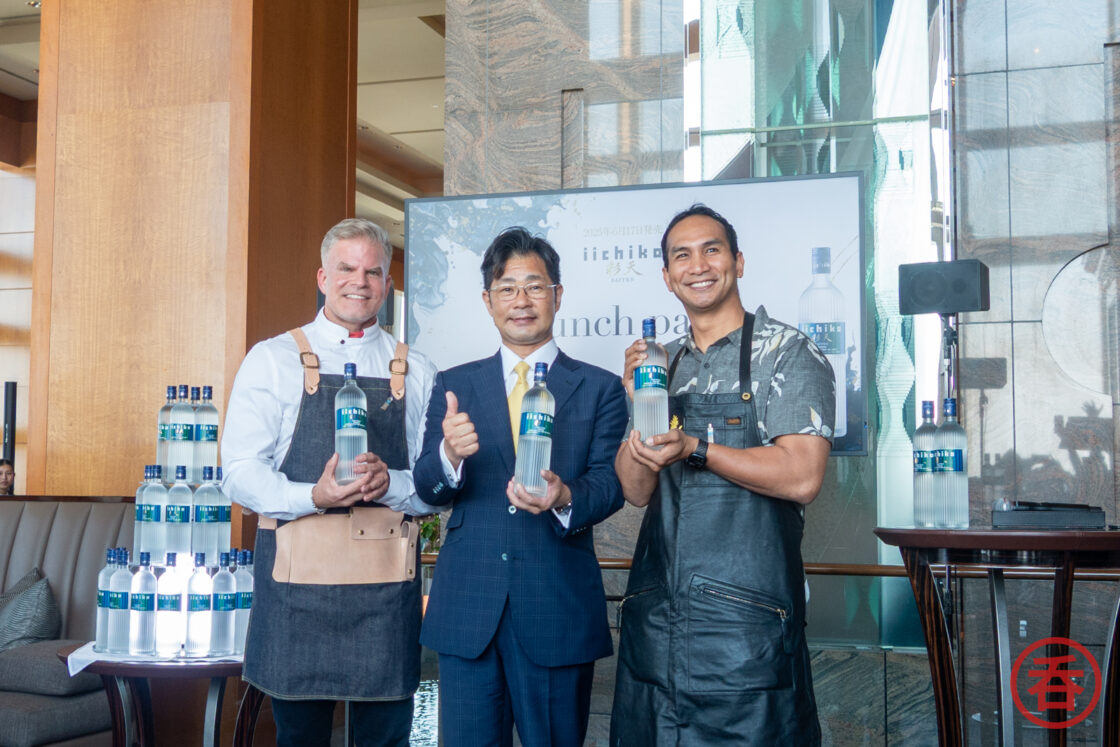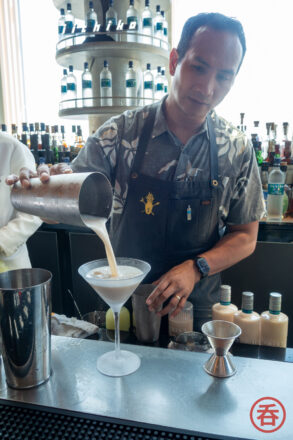Shochu giant Sanwa Shurui announced the launch of iichiko Saiten here in Japan on June 17, 2025. Part of the media strategy for the launch included putting on the ritz at Tokyo’s own Ritz-Carlton Hotel. As a member of the shochu media and personal fan of shochu, cocktails, and the Ritz-Carlton Tokyo, I of course attended.
If you’re reading this article from the US, Hong Kong, or Singapore, you may have already heard of iichiko Saiten. The bottle was launched as an export-exclusive for the US market back in 2019, and Hong Kong and Singapore quickly followed. Since then, the bottle has gone on to win a Tropy at IWSC 2022, Double Gold at ISC the same year, then Double Gold at SFWSC 2024. That’s to say iichiko Saiten is a reverse import, where it first made its debut overseas and is later available in Japan. Another famous example in Japanese drinks in this space is Suntory’s Midori melon liqueur, which made its neon green debut at Studio 54 in NYC in 1978. John Travolta apparently attended that launch party, the year after Saturday Night Fever hit theaters.
iichiko Saiten is the product of a two-year development process that involved the input of bartenders inside and outside Japan. They settled on a bottle that’s 43% abv, uses mostly atmospheric distillation rather than vacuum distillation, and is made with white koji. Compared to standard iichiko at 20% or 25% abv–which is vacuum distilled–there’s a lot more punch both on the abv and on the palate.
What is Sanwa Shurui trying to accomplish by releasing Saiten in Japan? I’d say they’re trying to turn shochu into the “next mezcal,” i.e. establishing shochu as a base liquor that can sit right alongside global standard white bases like gin, vodka, or a silver rum or Tequila, while also remaining true to the spirit’s Japanese roots. The shochu and cocktail cultures of Japan reached maturity independently of one another, and there traditionally hasn’t been a lot of experimentation with shochu as a base even in the country the spirit hails from.
US-based bartenders, meanwhile, are often looking for the Next Big Thing and regularly experiment with all kinds of spirits, liqueurs, homemade bitters, rotovaps, infusions, ice presses, and well anything else that can possibly impact the sensory experience of a cocktail. In that sense, rather than Japanese bartenders, bartenders outside of Japan seem to have taken the lead on shochu cocktails.
To that end, it looks like Sanwa Shurui wants to bring a slice of that creative thirst to Japan’s bar scene. The company emphasized that while Japan tends to drink both fermented drinks like sake and distilled base drinks like chuhai at the same place, the US (and other Western countries) generally reserves fermented drinks for the dinner table and distilled base drinks like cocktails for the bar. This is a point I very recently made myself.
Another interesting point that they made was that Japan tends to think of mixing shochu with something as a “loss.” The Japanese word for mixer, warimono (割りもの), implies that you are “cutting” or “breaking” the base spirit, i.e. you start with a spirit that’s a 10 but the drink becomes a 5 after mixing it with water (which is implied as a 2). That culture of… let’s call it “base ingredient worship” extends to the fresh fish in sashimi & sushi, Japanese vegetable dishes, matcha, udon, soba, and more.
The US, on the other hand, looks at cocktails as syngergizing, i.e. the formula would be closer to 3+2+1=10.
Review: iichiko Saiten
Those of you with a wonderful memory might recall my review of Sanwa Shurui’s “Wapirits Tumugi” back in 2019. How is that different from iichiko Saiten? We could dub Saiten a “cocktail version” of the regular iichiko, since Saiten is still a proper honkaku shochu. With botanicals added to it, Tumugi on the other hand, is closer to a gin/shochu hybrid.
Sanwa Shurui isn’t trying to reinvent the wheel here. One of their suggested serves, a Negroni, literally just swaps gin for iichiko Saiten. Another is a Sidecar where you just split your base between iichiko Saiten and Cognac. Japanese bartenders do appreciate their classics so this appeal to simplicity should go over quite well here.
Nose: Thick grain, hay, and let’s say dry earth
Palate: Rich umami, a handful of barley, and green apple
Finish: Red cherry candies, long-lasting and not too hot
Score: N/A, this was a sample bottle
Price: Thanks to Sanwa Shurui for providing the sample
Hi there! I created and run nomunication.jp. I’ve lived in Tokyo since 2008, and I am a certified Shochu Kikisake-shi/Shochu Sommelier (焼酎唎酒師), Cocktail Professor (カクテル検定1級), and I hold Whisky Kentei Levels 3 and JW (ウイスキー検定3級・JW級). I also sit on the Executive Committees for the Tokyo Whisky & Spirits Competition and Japanese Whisky Day. Click here for more details about me and this site. Kampai!
















One Comment